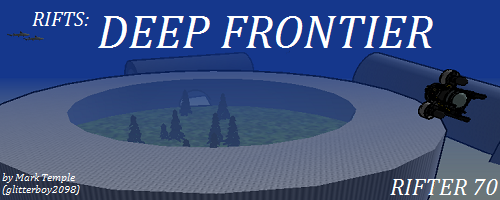in robotech i didn't mind much, since my games rarely got into space.
ever since getting phase world, i've been trying to devise a more realistic space travel system while maintaining the cinematic feel of the setting. after several failed attempts, i eventually found a method i liked, and i've been refining it since.
the main idea is Inertia and thrust. Thrust is the ships ability to alter it's velocity, and inertia keeps a ship moving at a velocity when the drives are off.
under this system, ships in combat would accellerate (thrust) to a speed, and then would coast at that velocity while fighting, altering speed only if needed.
this set up also allows for some more interesting combat methods, such as kinetic impactors, the use of reaction drives as weapons, and other such interesting methods.
in addition, it opens up the option of slower than light interstellar travel, which in turn allows for low-tech star nations and very interesting cosmozoans.
i have intentionally designed the system to be directly compatable with palladiums current game mechanics, with minimal modifications needed.
first is the unit of measurement. for simplicity, these are in mach, or the speed of sound, although in space this seems kinda silly.
to make the math easier, i stuck to metric, although those stuck in the imperial mode can use miles and feet if they want.

1 mach = 1079 kph. (674mph)
1 c (speed of light) = 1,000,000 mach.
now, thurst is measured in how many mach a ship can accellerate by in a set period. for referance i have figured out the accelleration in gravities for each listing, so GM's and players can get an idea of how powerful the ships are. also listed are the kinds of drives that generally make use of which thrust profile.
1 mach per melee = 2g's advanced drives (contragrav, torch drive)
1 mach per minute (4 melee's) = .5g's basic drive (fusion drive, orion drive, Photon drive[antimatter drive])
1 mach per hour (240 melee's) = .08g's simple drives (ion, plasma, NERVA)
1 mach per day = .005g's passive drives (light sail, magsail, plasma sail)
now, although light speed is the absolute speed limit, most drives reach a point where the amount of energy used to accellerate is negated by relativity. most won't have the fuel to reach this max velocity, but there are always ways. (note, i am being generous here. these are general catagories, not specifics. GM's feel free to bump these up or down depending on the drive and races tech level.)
advanced drives: .5 c (500,000 mach)
basic drives: .25c (250,000 mach)
weak drives: .10c (100,000 mach)
passive drives: .7c (700,000 mach) (passive drives will need boosting of some sort to reach such speeds before leaving a system)
at these speeds, even a bolt or nail can be a weapon of mass destruction. ships even more so. as a general rule, an object moving at 3kilometers a second does damage equal to it's mass in TNT.
what this means is that for every 10 mach of velocity, an object does 1D6x10md per ton of mass. this damage is applied to both objects in the collision.
powerful reaction drives, such as fusion, antimatter photon drives, and torch drives, are highly destructive. they generate plumes of high temprature gases which provide the propulsive force, and these plumes can cut through ships like a knife through butter.
for these drives, the drive plume extends 1 kilometer per mach of accelleration, and inflicts 1D6x10md per mach of accell for every 1000 ton of mass to anything that enters the plume.
lower tech races have often used fusion drive or photon drive ships as weapons to defeat more advanced enemies by making use of this fact.
the only other major alteration made is weapon ranges. because ships are much faster, weapons must be much farther ranges to compensate. multiply all directfire weapon ranges by x10.
missiles have a velocity of 100x the listed mach #'s, plus the velocity of the firing ship. (missiles are launched with boosters, mass drivers or gravitic railguns to high velocity, and use onboard drives for manuvering only.) at 1 mach, an object covers about .3 kilometers a second, so to find the range of a missile, take it's velocity and divide by 3 to find how many kilometers the missile can travel in one melee attack. note that this comes to about 4.5 kilometers per melee, for those really long range shots.
in a misc. note, normal orbital velocity around a 1 gravity planet like earth is between 20-36 mach. anything less falls back to the planet, anything more escapes the planets pull. a ship can reach orbit if it can sustain 1 mach per melee of accelleration long enough to reach orbital speeds. (many less powerful ships have boosters or special drive modes to allow this.) given how powerful most ships are in phase world and others, this really doesn't matter much, but for settings like Aliens Unlimited, Robotech, and Mutants in Orbit this can help define which ships cannot enter an atmospere.
----
on a GM's note, those who don't wish to use the term mach should feel free to rename it to whatever they feel is best.
please let me now if there is anything you think i should add to this.
(edit: added a modifier to the fusion plume to reflect that bigger ships mean more damaging drives)



 I'm a Trek fan too!
I'm a Trek fan too!